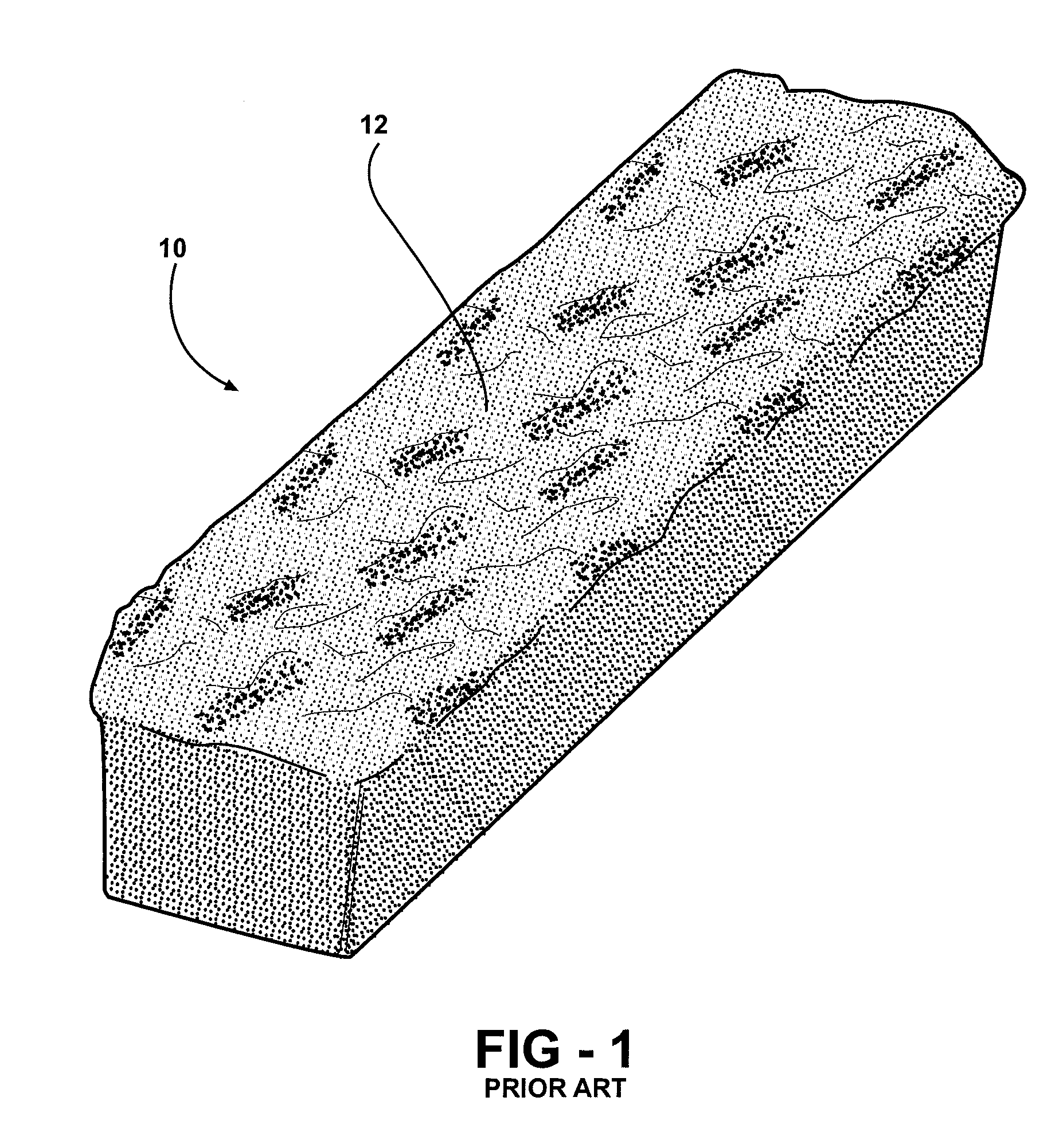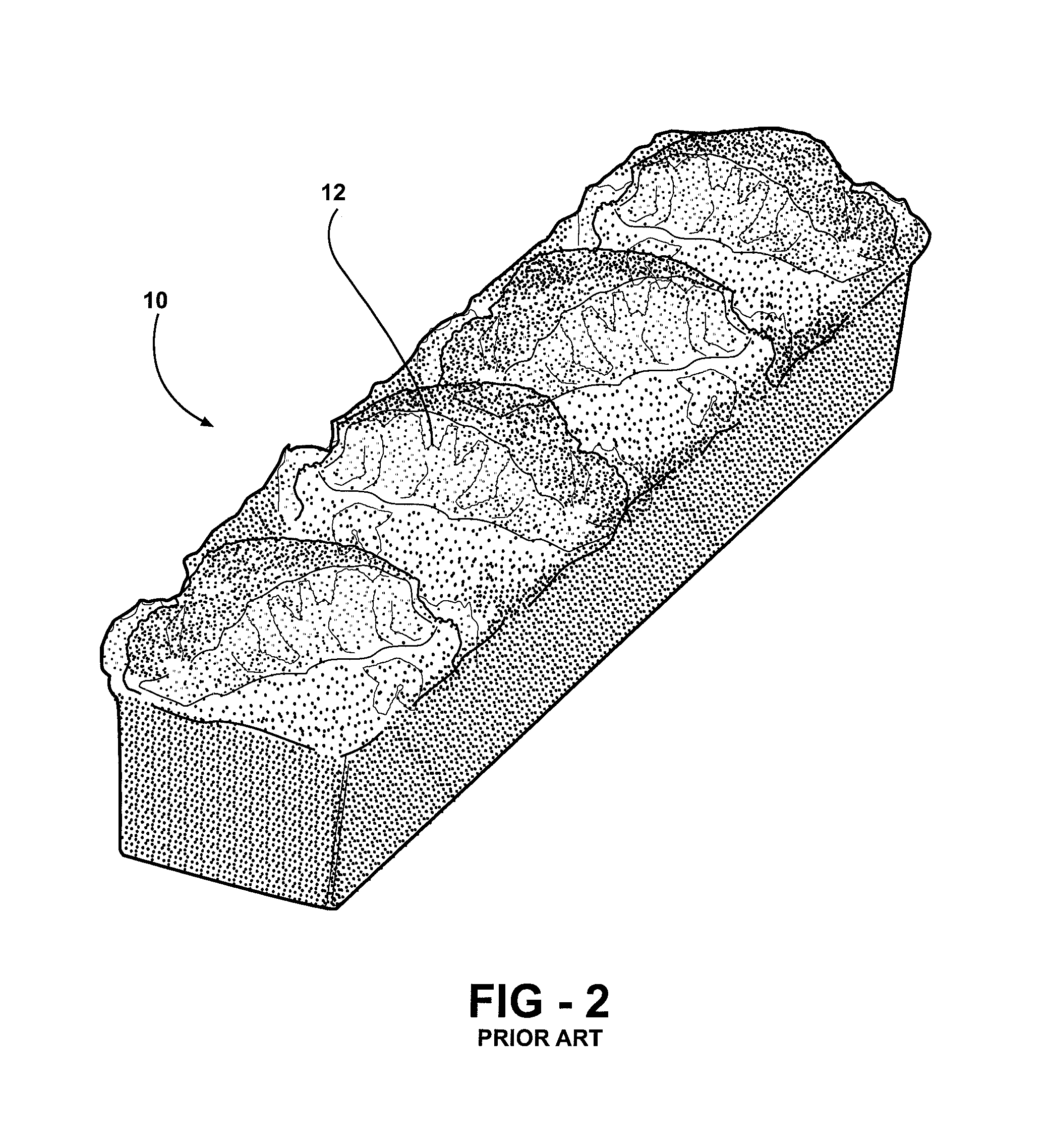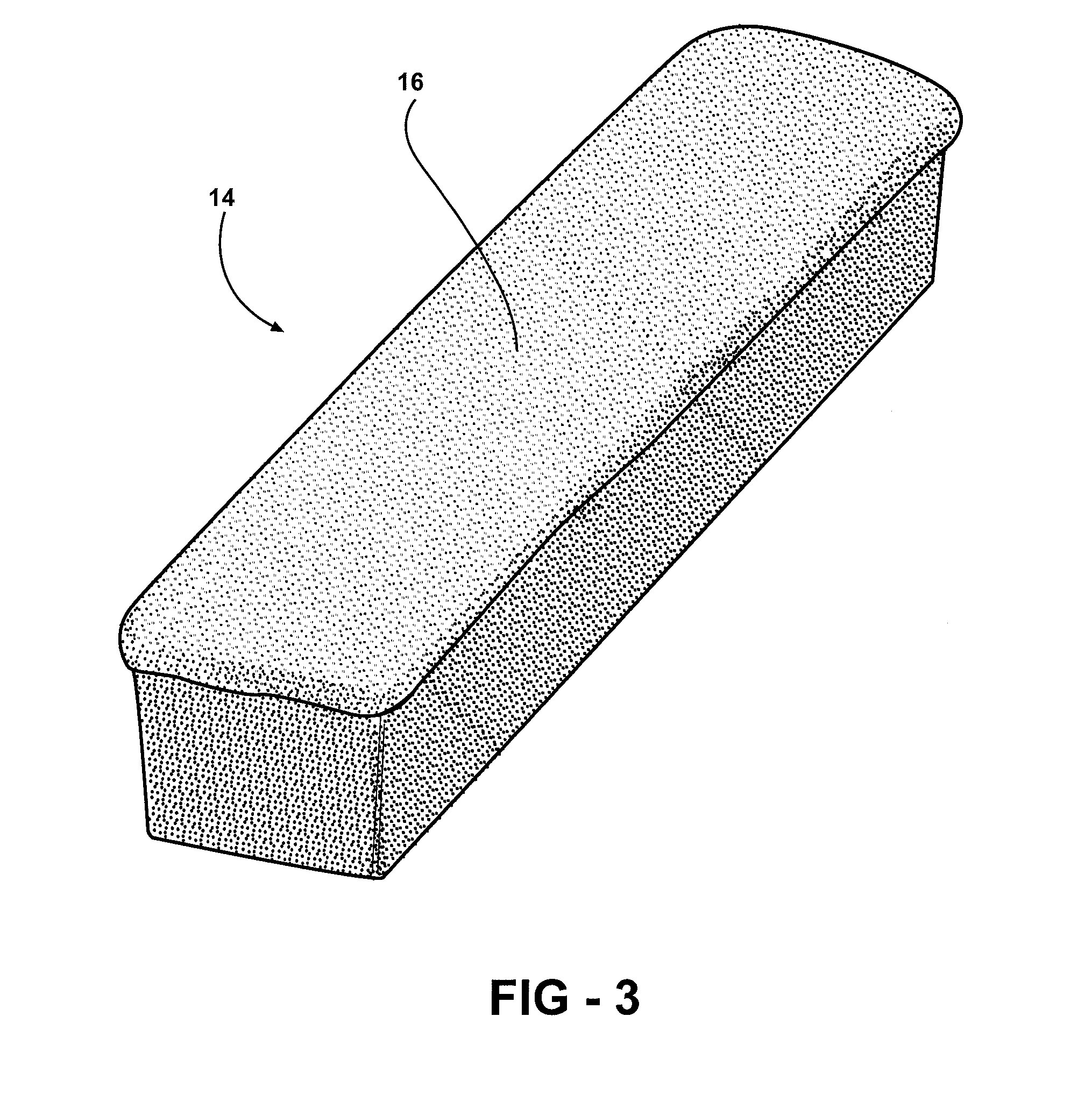Method of forming a graft polyol and polyurethane article formed from the graft polyol
a polyurethane and graft polymer technology, applied in the field of graft polyol, a method of forming graft polyol, and a polyurethane article formed from graft polyol, can solve the problems of hydrophilicity, hydrocarbons may increase odor, and are prohibitively expensive without recycling,
- Summary
- Abstract
- Description
- Claims
- Application Information
AI Technical Summary
Benefits of technology
Problems solved by technology
Method used
Image
Examples
examples
[0052]A graft polyol, Graft Polyol 1, is formed according to the method of the present invention. A comparative graft polyol, Comparative Graft Polyol 1 is also formed but is not formed utilizing the Chain Transfer Agent of the present invention.
[0053]Specifically, to form the Graft Polyol 1, a “Monomer Charge” is formed and includes approximately 275 grams of Acrylonitrile and approximately 550 grams of Styrene, serving as two Polymerizable Monomers, and approximately 8 grams of 3-Mercapto-1,2-propanediol, as a Chain Transfer Agent, combined in a first auxiliary reservoir, as set forth in Table 1. Additionally, an “Initiator Charge” is also formed and includes approximately 490 grams of a Carrier Polyol and approximately 4 grams of a Free Radical Initiator combined and added to a second auxiliary reservoir, also set forth in Table 1. Further, a “Reactor Charge” is formed and includes approximately 62 grams of a Macromer Polyol, approximately 460 additional grams of the Carrier Poly...
PUM
| Property | Measurement | Unit |
|---|---|---|
| Temperature | aaaaa | aaaaa |
| Temperature | aaaaa | aaaaa |
| Percent by mass | aaaaa | aaaaa |
Abstract
Description
Claims
Application Information
 Login to View More
Login to View More - R&D
- Intellectual Property
- Life Sciences
- Materials
- Tech Scout
- Unparalleled Data Quality
- Higher Quality Content
- 60% Fewer Hallucinations
Browse by: Latest US Patents, China's latest patents, Technical Efficacy Thesaurus, Application Domain, Technology Topic, Popular Technical Reports.
© 2025 PatSnap. All rights reserved.Legal|Privacy policy|Modern Slavery Act Transparency Statement|Sitemap|About US| Contact US: help@patsnap.com



